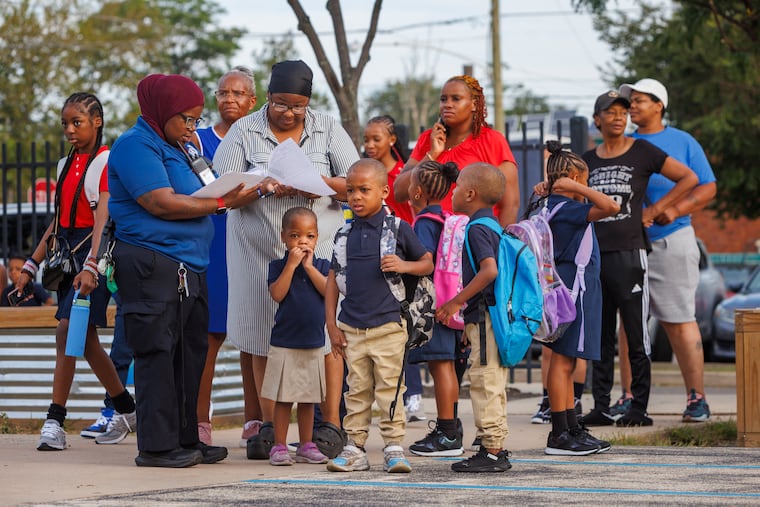70 years after ‘Brown v. Board of Education,’ fair school funding is the only way to counter ongoing segregation | Editorial
The resegregation of America’s public schools has led to the same inequitable public education funding that prompted the 1954 U.S. Supreme Court decision.

Was anyone really surprised when it was reported on the 70th anniversary of the U.S. Supreme Court’s supposedly groundbreaking Brown v. Board of Education decision that many schools are as much or more segregated than they were decades ago? Anyone watching the children headed to urban schools each day — most of them Black and brown — had already figured that out.
Almost half of all public school students nationally are white, but the percentage of schools with fewer than 10% white students has nearly tripled over the past 30 years, from 7% to 20%. These “intensely segregated” schools are mostly in urban areas, where public school students are typically at least 75% Black or Latino.
That disappoints some people, while others accept it as yet another lingering issue in America that they no longer expect to see resolved. Immigration reform is on that list, too. It’s not that these issues lack solutions, but this country seems to have lost the resolve it once mustered when trying to battle past entrenched attitudes and find common ground.
» READ MORE: Philly’s kids can’t succeed in school if they’re not showing up to class | Editorial
Losing resolve is somewhat understandable when it comes to desegregating schools. No one wants a repeat of the decades-long war that broke out after the Supreme Court, on May 17, 1954, ruled states could no longer maintain segregated public school systems that often didn’t even pretend to fund and equip Black classrooms as well as white ones.
That war raged from Birmingham, Ala., to Boston, as angry white parents railed against court-ordered desegregation plans, which in some instances included mandatory busing. When protests that sometimes became mob gatherings didn’t work, many white families moved to suburban neighborhoods to flee schools with growing numbers of Black students.
The new suburbanites took their tax dollars with them, thus enriching suburban school districts while leaving urban school systems with less money to educate larger numbers of low-income and special-needs students whose education required more funding than their now tax-deficient school boards could provide. That’s right: The resegregation of America’s public schools has led to the same inequitable distribution of tax dollars for public education that led to the Brown decision in the first place.
Blame that on presidential appointments over the past 70 years that replaced Supreme Court justices and lower court judges with conservatives who diluted past court orders and never included suburban schools in desegregation plans that would bring more Black students to them.
Despite white flight, all public schools have become more diverse. That’s largely due to immigration. More than 80% of all public school students were white in 1968. By 2021, they made up only 45% of the student body. During that same period, the percentage of Latino students increased from 5% to 28% and Black students remained just under 15%. Since the 1990s, the percentage of Asian students has doubled to 6%, while Native American students have never been more than 1%.
That greater diversity, however, hasn’t achieved the fair funding Brown sought.
“Black students may no longer need to be escorted to school by U.S. marshals, and they may no longer face angry mobs on their way to school or eat at separate lunch tables, but today, we have a system where we have normalized underinvesting in schools that serve a majority of Black communities,” said U.S. Education Secretary Miguel Cardona at a White House celebration of Brown’s 70th anniversary.
» READ MORE: Philadelphia students deserve safe schools | Editorial
The fight to adequately fund public schools won’t be in the federal courts; it will be in the individual state legislatures that control taxes and expenditures. It’s estimated that this country spends $150 billion less than needed to educate its children. Included in that figure is a $2.5 billion funding gap for Pennsylvania and $1.3 billion for New Jersey. No matter the state, poor, mostly Black and brown students in urban school districts are more likely to need the added educational help that better funding would provide.
Cheryl Brown Henderson, whose father, Oliver Brown, was the lead plaintiff in Brown, said adequate school funding would be a fitting legacy for the court case. “I always like to say that schools were the battle, but society was the target,” Henderson said. “We’re still fighting the battle over whose children do we invest in. Any time we can talk about failing, underfunded public schools, there is a problem.”
Seventy years later, we can’t afford to quit trying to solve it. Our children deserve better than that.